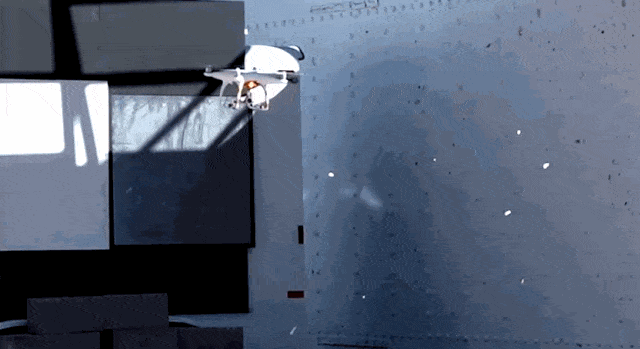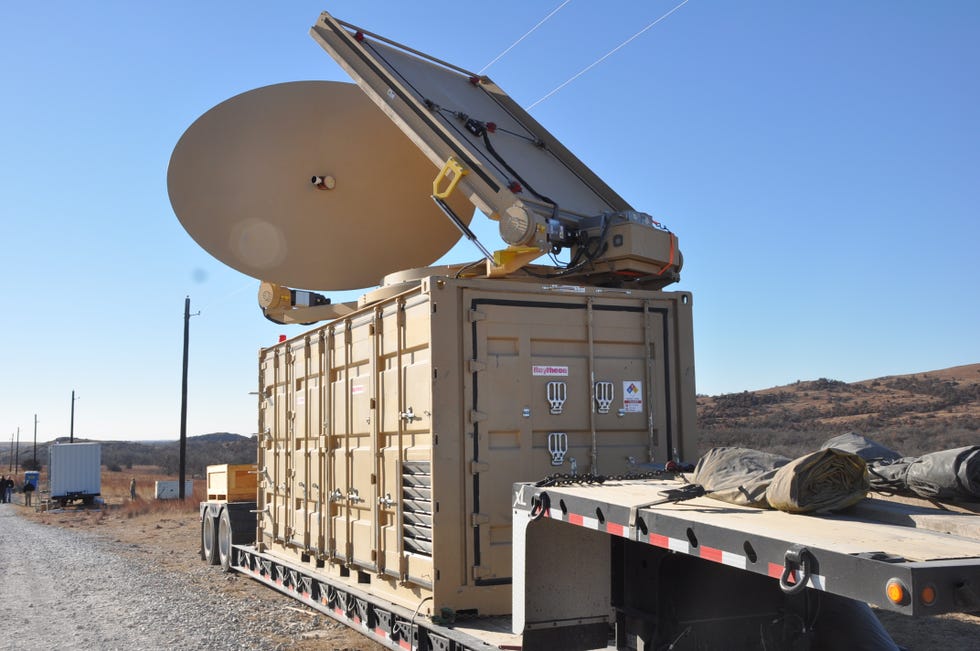The U.S. Military is facing an unlikely new threat: Drones, including commercially available ones, are capable of spying on and attacking U.S. forces. Two so-called Counter-Unmanned Aerial Systems (C-UAS) tested by the Army are the Raytheon high power microwave (HPM) and high energy laser (HEL). Together, the two weapons burned a total of 45 drones during a recent Army exercise, plus some mortar projectiles.
The Maneuver Fire Integrated Experiment, or MFIX, took place in December 2018 at Fort Sill, Oklahoma. Part of the exercise involved evaluating counter-drone weapon systems designed to keep the pesky, often improvised weapons at arm’s length. Attacks by drones have grown more and more frequent, with recent high profile attacks including the destruction of a billion dollar Ukrainian arms depot, the use of weaponized civilian drones by ISIS forces, drones spotting for Russian artillery in the Crimea, and a recent coordinated drone swarm attack against Russian air and naval forces in Syria.
The simplicity and widespread availability of commercial drones means they are probably a permanent fixture of warfare, to be used by everyone from guerrillas to major armies. The U.S. Army will eventually face drones on the battlefield, whether it be a primitive hand grenade-dropping drone bomber, a suicide drone packed with explosives, or an artillery attack scouted by an innocent-looking commercial drone.
According to Raytheon, HPM (above) and HEL (top) together knocked down 45 different drones at MFIX and also destroyed six stationary mortar projectiles. HPM engaged several UAS swarms, often knocking down 2-3 drones at a time, while HEL destroyed another 12. Both HPM and HEL are so-called “soft kill” weapons that cause drones to fail instead of blowing them up. Gravity does the rest.
HPM broadcasts a microwave beam designed to burn out a drone’s primitive control systems, causing it to crash short of the target. The width of the dish means it can often blot out several drones, affecting a wider portion of the sky. HPM is mounted on a shipping container-like box, making it easy to transport and move.
HEL, on the other hand, directs a narrow beam of laser light at the target. In the video above, the laser beam flickers across the front of the drone, melting the plastic body and causing structural failure. HEL is mounted on a Polaris ATV-type vehicle for rapid battlefield mobility.
One of the most interesting aspects of the MFIX tests was the destruction of the mortar rounds. Lasers and high powered microwaves could someday destroy artillery rounds in midair, heating until the explosive inside detonates. Such an intercept is very tricky, because a radar and fire control system would have to detect, track, and fire a microwave or laser beam against an incoming artillery round long enough to cause a detonation. Although such systems for now don’t yet exist this is a very big hint they are under development, and for the first time ground forces could have the ability to shoot down rocket, artillery, and mortar rounds raining down on their heads.

Kyle Mizokami is a writer on defense and security issues and has been at Popular Mechanics since 2015. If it involves explosions or projectiles, he's generally in favor of it. Kyle’s articles have appeared at The Daily Beast, U.S. Naval Institute News, The Diplomat, Foreign Policy, Combat Aircraft Monthly, VICE News, and others. He lives in San Francisco.














